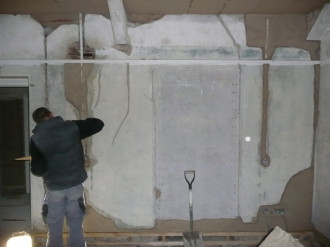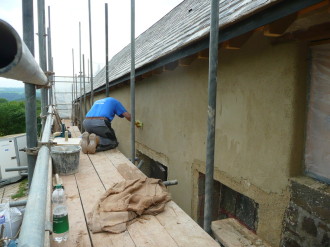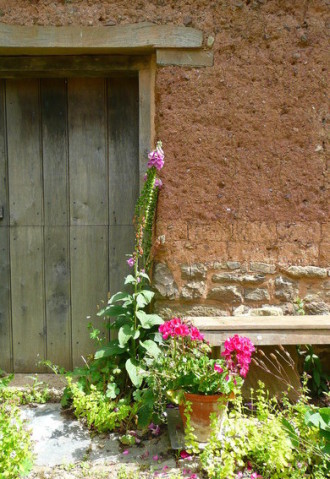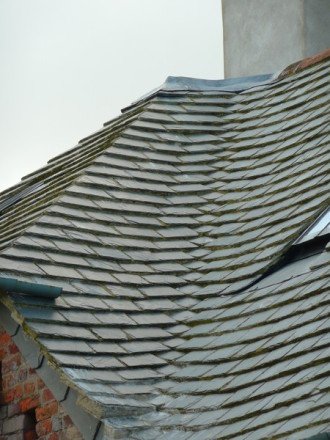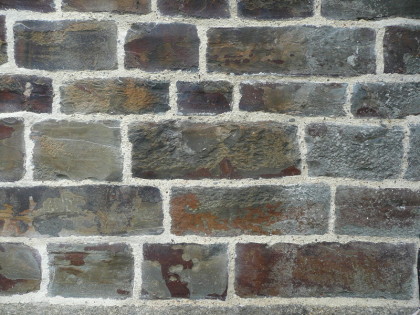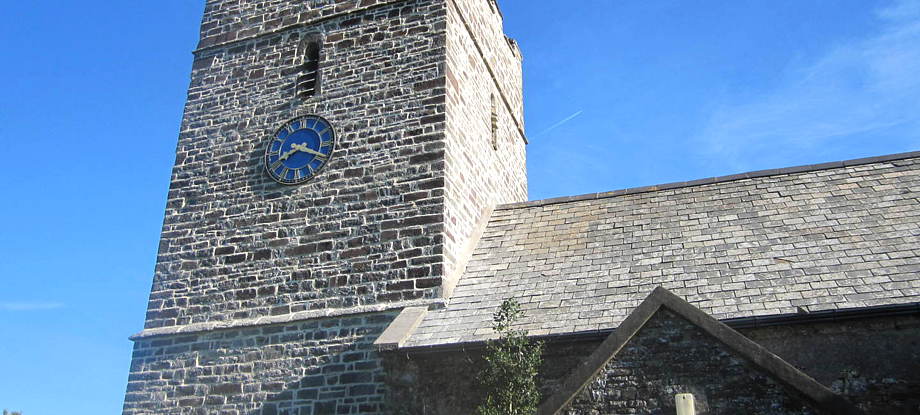
Materials and Methods for Listed Building Repair
Lime Plastering
Why lime plaster for listed building repair ?
Houses built from solid masonry (ie. the walls are solid all the way through unlike modern cavity construction) rely on the evaporation of moisture from the surface to keep your listed building dry. This is especially important if the house is built of cob. Using impervious plasters can trap moisture and cause decay to the structure but lime plaster enables this evaporation to take place efficiently because it is breathable. Lime plaster, therefore, keeps the walls healthy and allows the building to perform as originally intended.
Conservation of Lime Plaster
Conservation of lime plaster is imperative as, over many years, old plaster surfaces have been lost due to modernisation and refurbishment. We believe it is important to recognise that all old plasterwork, no matter how plain or damaged, should be saved for historical reference. In addition, original plasterwork is integral to a buildings unique character.
Lime Rendering
Houses built from solid construction (ie. cob or stone) were traditionally coated in lime render to protect them from the weather. Lime render allows moisture to partially penetrate the outer substructure but conversely encourages rapid evaporation which enables the correct balance to be achieved. Unfortunately, over the years, imperviouse cement renders have been applied in an attempt to waterproof the walls. This is misguided as any moisture that penetrates the wall cannot freely evaporate which results in damp and, in some extreme cases, can lead to collapse of cob walls.
Cob Wall Repair
Cob has been used in Devon for centuries as a wall building material. It consists of clay, stone and straw which is mixed together to a workable consistency and laid on the wall. Each layer is allowed to dry out before the next one is applied.
Cob walls can last many years as long as the top and bottom are protected. When it comes to repair, a simple approach is all that is required - replace like with like (either re-constituted cob mixed on site or purpose made cob blocks).
Traditional Roof Construction
We use only local materials for roof repairs, either new or reclaimed Cornish slate as it is long lasting and has an individual charachter. We have roofed many properties with rag, scantle and regular coursed slate some set in lime mortar. We have completed a number of laced valleys as can be seen here, this was a traditional way of treating pitched valleys.
Rag Slate - large slates gradually diminishing in size towards the ridge
Scantle- Smaller sized slate usually set in diminishing courses.
Wet laid- The slates are bedded into a lime mortar to improve the roofs durability.
Slate Hanging- A wall is clad with slate in exposed situations.
Stonework Repointing
Many stone buildings have previously been re-pointed using cement based mortar which seriously impairs the breathability of the walls as this will trap moisture into the core of the wall. Lime pointing has the advantage of being able to freely evaporate the moisture away from the structure and so keeping the inside of the building dry.

